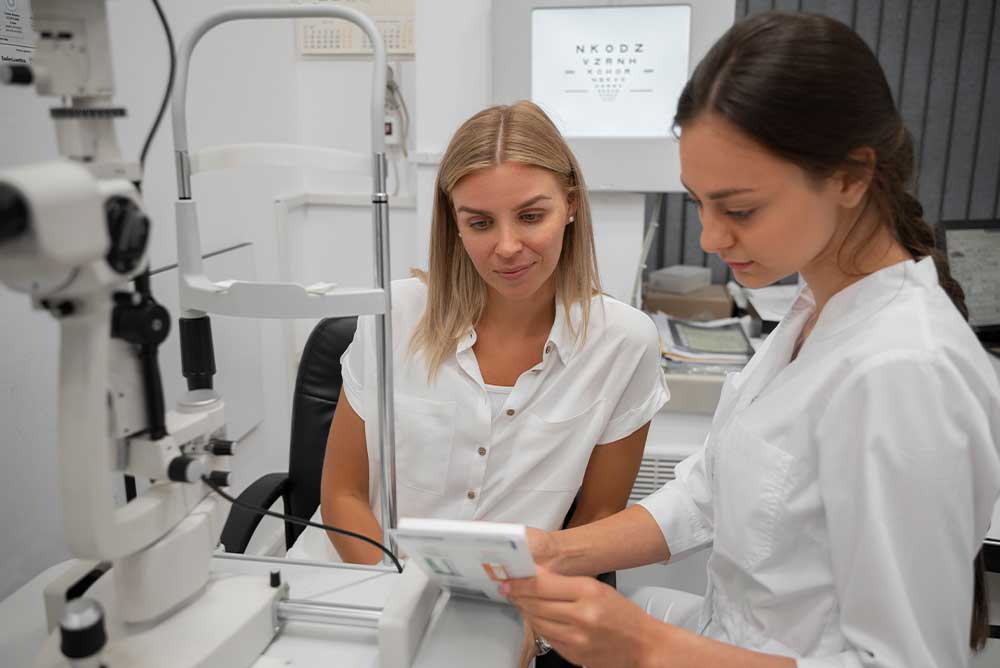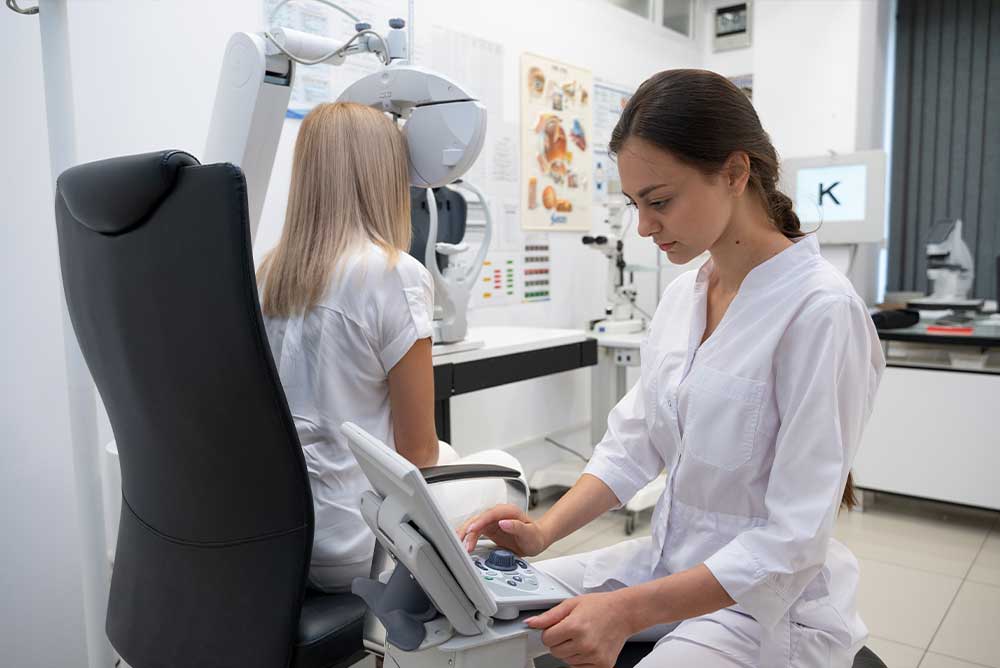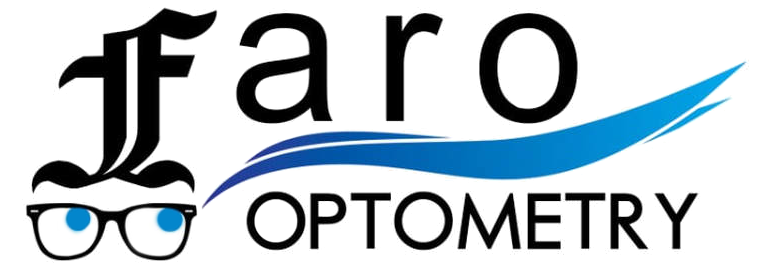An eye exam is essential for maintaining optimal eye health, identifying conditions like glaucoma and cataracts in early stages, and allowing for proper treatment.
When you check your eye health, you can ensure your vision stays clear and prevent serious eye conditions from progressing unnoticed. In this article, we examine the importance of eye exams and related tips.
Contents
A Comprehensive Eye Exam: What It Covers
A comprehensive eye checkup is more than a simple check. It evaluates the overall health of your eyes and detects vision changes properly.
The eye doctor measures your visual acuity, determines if you need glasses or contact lenses, and updates your prescription if necessary. By using specialized tools, your optometrist also checks the internal and external structures of your eyes for signs of vision changes, diseases, or damage. With this explanation, let’s take a look at eye conditions that doctors check during the eye exam.
Deceting Eye Conditions During an Eye Exam
Eye checkups can detect a range of eye-related and systemic health conditions. So, Early detection is crucial for effective treatment and maintaining eye health.
During this checkup, three types of disorders are detectable:
- Glaucoma, or the increasing pressure in the eye, can lead to blindness.
- Cataracts, known as clouding of the eye’s natural lens, cause blurry vision.
- Macular Degeneration is any damage to the central part of the retina, leading to vision loss.
Systemic Conditions Identified
Besides eye issues, other conditions such as diabetes or hypertension are detectable during eye exams, too. Eye exams can reveal diabetic retinopathy, a common complication of diabetes. Also, high blood pressure can cause changes in the eye’s blood vessels, which is detectable during the eye exam. Additionally, autoimmune disorders known as inflammation, which indicate autoimmune diseases like lupus or rheumatoid arthritis, are detectable by practitioners.
What Happens During Eye Exams?
An eye checkup evaluates both your vision and eye health. Here’s what typically happens during an appointment.
Preliminary Tests
The optometrist performs basic tests such as checking eye movement, depth perception, and color vision.
First, you’ll read letters from an eye chart to determine how well you see at different distances. The doctor then uses a phoropter to find the most accurate prescription for glasses or contacts by asking which lens options make your vision clearer. Finally, a painless test checks for increased eye pressure, which is very significant for detecting glaucoma.

What happens if you Skip Eye checkups
Ignoring regular eye exams may seem cost-effective but can lead to expensive treatments later. An affordable and cheap eye exam today could save you from costly procedures tomorrow. Faro provides all families with these facilities, eye checks, and eye care to prevent severe issues and illness.
Vision Changes and the Importance of Early Detection
Many eye conditions progress slowly, making it easy to miss changes in your vision until they interfere with daily tasks such as working with computers or driving. Early detection means less invasive treatments, fewer medical expenses over time, and prevents vision changes.
How Often Should You Get an Eye checkup?
The recommended frequency of eye exams depends on age, family history, and existing medical conditions.
For adults from 18 to 60, Faro recommends an eye exam every 1-2 years, depending on eye health and risk factors. If you feel any vision changes or blurry vision, reserve an appointment at Faro as soon as possible. Also, for people over 60, yearly exams to monitor age-related vision changes and potential eye diseases are essential.
Children and Teens
For infants, the first eye exam should be at six months, and then at the age of three for the second time. School-aged children, every 1-2 years, are recommended, although any vision changes need immediate doctor appointments.

FAQ
How much does a cheap eye exam cost?
The cost varies by location and provider but typically ranges from $50 to $100 at vision clinics or optical chains.
What are common vision tests during an eye exam?
Common vision tests include reading a letter chart, refraction tests for prescription updates, and checking for color blindness, depth perception, and peripheral vision.
How do I know if I need an eye exam?
Book your appointment for the eye exam if you experience blurry vision, difficulty focusing, eye strain, or frequent headaches. Preventive exams are also important, even if you have no symptoms.
Conclusion
Eye health means the ability to see, so never let any vision changes disrupt your life or make you spend a lot of money on treatment. Regular eye exams safeguard your sight, prevent serious eye conditions, and ensure a lifetime of clear, comfortable vision. Schedule your eye exam today at Faro and see the world with confidence!

